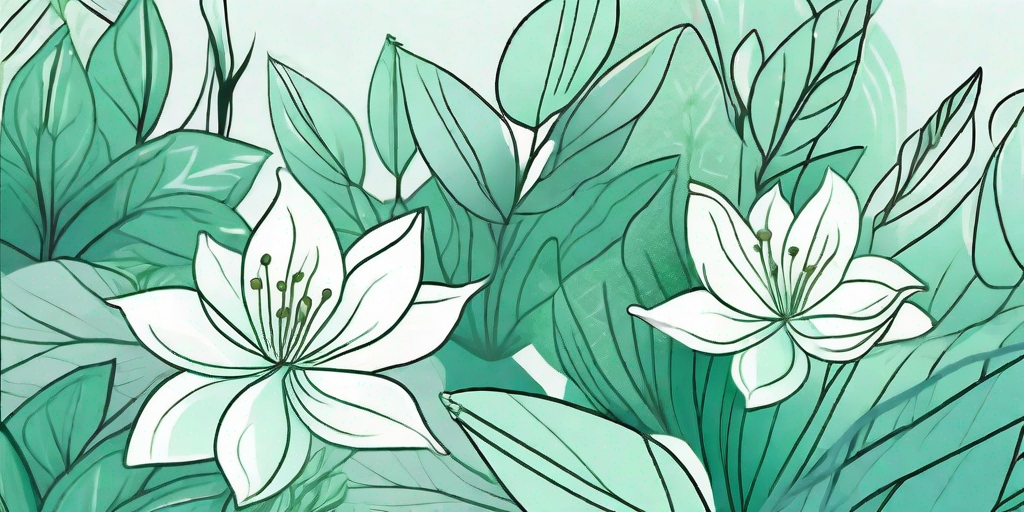
Jasmine, the queen of the night, is a popular plant known for its intoxicating fragrance and beautiful blooms. But did you know there are over 200 species of jasmine? Yes, you read that right! So, buckle up, plant lovers, because we're about to embark on a fragrant journey exploring the different types of jasmine plants.
The Wonderful World of Jasmine
Originating from the tropical regions of Asia, jasmine has been cultivated for centuries for its unique fragrance and medicinal properties. It's a versatile plant that can be grown as a shrub, vine, or indoor plant. But before we dive into the different types, let's take a moment to appreciate the sheer diversity of this plant genus.
From the sweetly scented Jasminum officinale to the vibrant Jasminum beesianum, each variety has its own charm. Some are perfect for creating a fragrant hedge, while others are ideal for adding a splash of color to your garden. And let's not forget the indoor varieties that can fill your home with their delightful aroma.
Common Jasmine Varieties
Now that we've whetted your appetite, let's delve into the most common jasmine varieties. Each one has its own unique characteristics, so you're sure to find one (or several) that tickles your fancy.
Jasminum Officinale (Common Jasmine)
Commonly known as poet's jasmine or true jasmine, Jasminum officinale is the most popular variety. It's a hardy climber with white, fragrant flowers that bloom in the summer. This variety is perfect for trellises and pergolas, where its intoxicating scent can waft through the air.
But don't be fooled by its delicate appearance. This jasmine is a tough cookie that can withstand cold temperatures and even some neglect. Just give it some sun, well-drained soil, and it'll reward you with a summer full of fragrant blooms.
Jasminum Sambac (Arabian Jasmine)
Next up is Jasminum sambac, also known as Arabian jasmine. This variety is a bushy shrub with white, waxy flowers that bloom all year round. It's the national flower of the Philippines and is often used in religious ceremonies in India.
Arabian jasmine is a bit more finicky than common jasmine. It prefers warm temperatures and high humidity, making it an excellent choice for greenhouses or indoor growing. But with the right care, it can also thrive outdoors in warmer climates.
Caring for Your Jasmine
Now that you've met some of the jasmine family, let's talk about how to care for these fragrant beauties. While each variety has its own specific needs, there are some general rules that apply to all jasmine plants.
Light and Temperature
Jasmine plants love the sun. Most varieties need at least six hours of sunlight each day. However, they also appreciate some shade during the hottest part of the day. As for temperature, jasmine plants prefer warm climates but can tolerate cooler temperatures, especially if they're grown indoors.
Water and Fertilizer
When it comes to watering, jasmine plants prefer their soil to be consistently moist but not waterlogged. Overwatering can lead to root rot, which is a surefire way to kill your plant. As for fertilizer, a balanced, slow-release type applied in the spring and summer will keep your jasmine happy and healthy.
FAQs About Jasmine
Now, let's address some frequently asked questions about jasmine. Because let's face it, we all have questions, and who better to answer them than your friendly neighborhood plant expert?
Can I grow jasmine indoors?
Absolutely! Many jasmine varieties, like Jasminum polyanthum, are perfect for indoor growing. Just make sure they get plenty of light and humidity, and they'll reward you with their fragrant blooms.
Is jasmine toxic to pets?
While jasmine is not generally considered toxic to pets, it's always a good idea to keep plants out of reach of curious fur babies. Some pets may have a sensitivity to certain plants, so it's better to be safe than sorry.
How often should I water my jasmine plant?
This depends on the variety and where you're growing it. Generally, jasmine plants prefer their soil to be consistently moist. However, they don't like waterlogged soil, so make sure your plant has good drainage.
Conclusion
And there you have it, folks! A comprehensive guide to the different types of jasmine plants. Whether you're a seasoned gardener or a budding plant enthusiast, we hope this guide has inspired you to add a jasmine plant (or two) to your collection.
Remember, the world of jasmine is vast and fragrant. So, don't be afraid to explore different varieties. Who knows, you might just find your new favorite plant!















